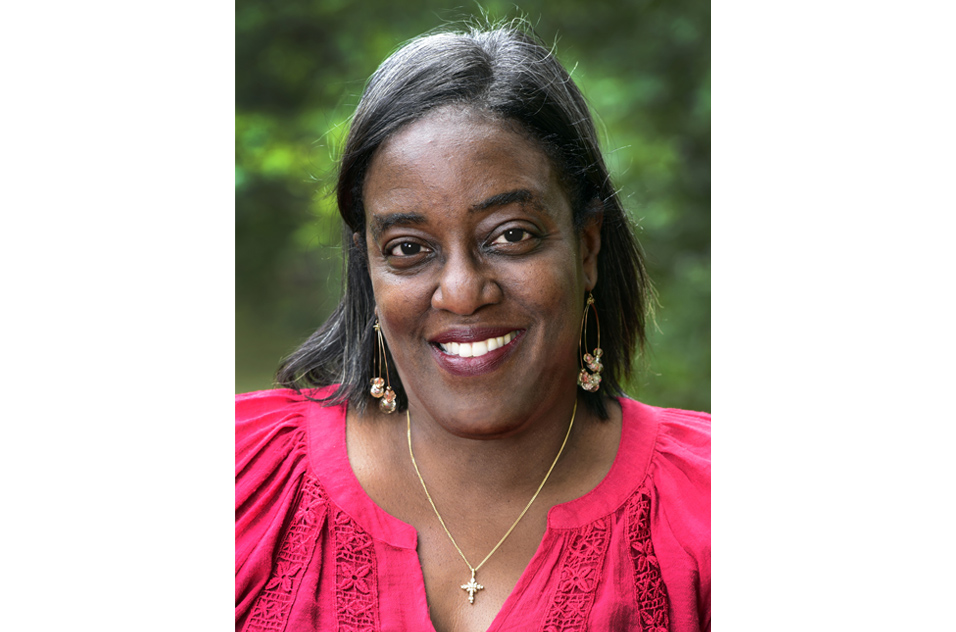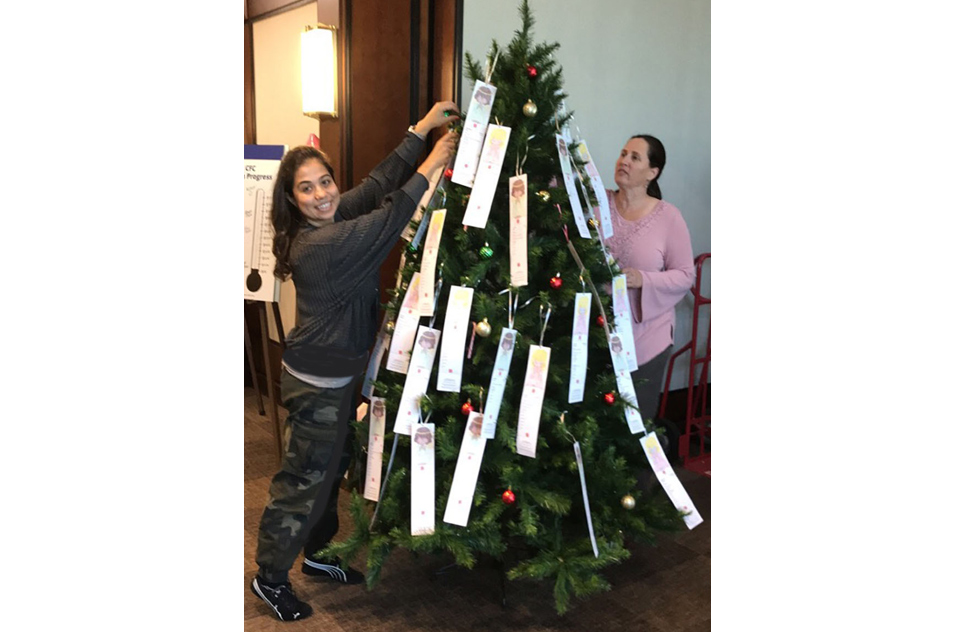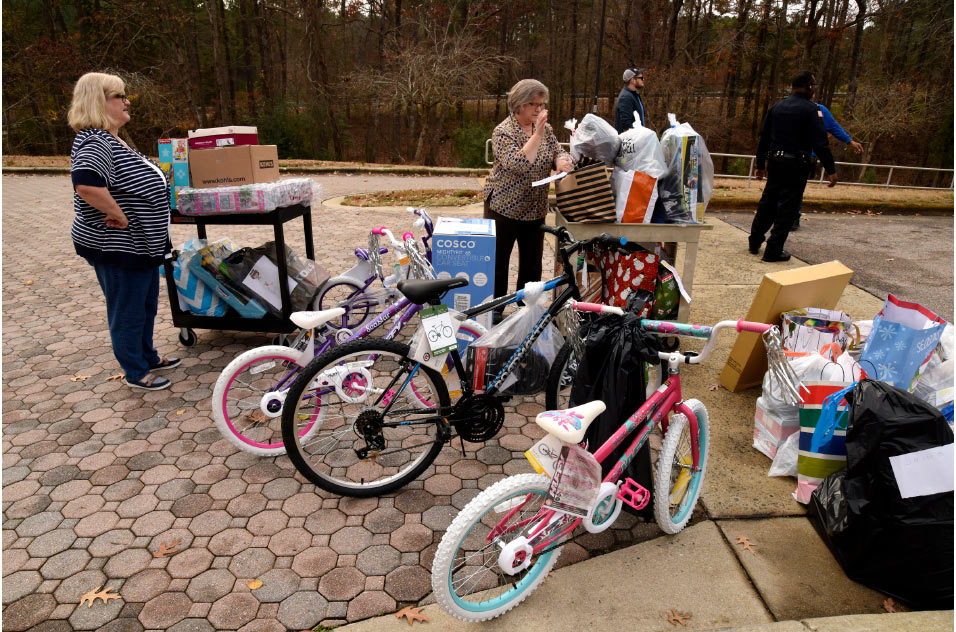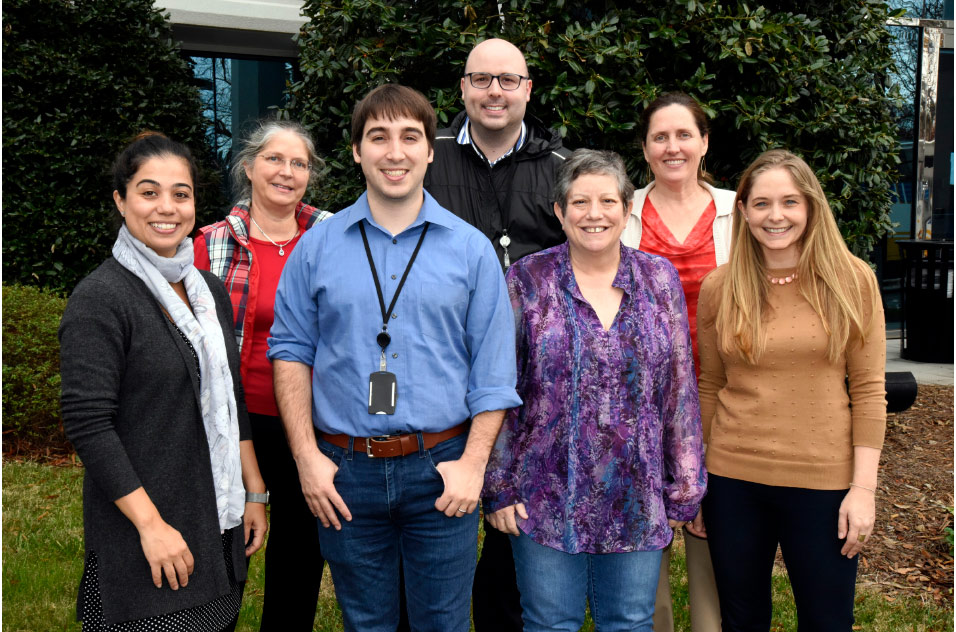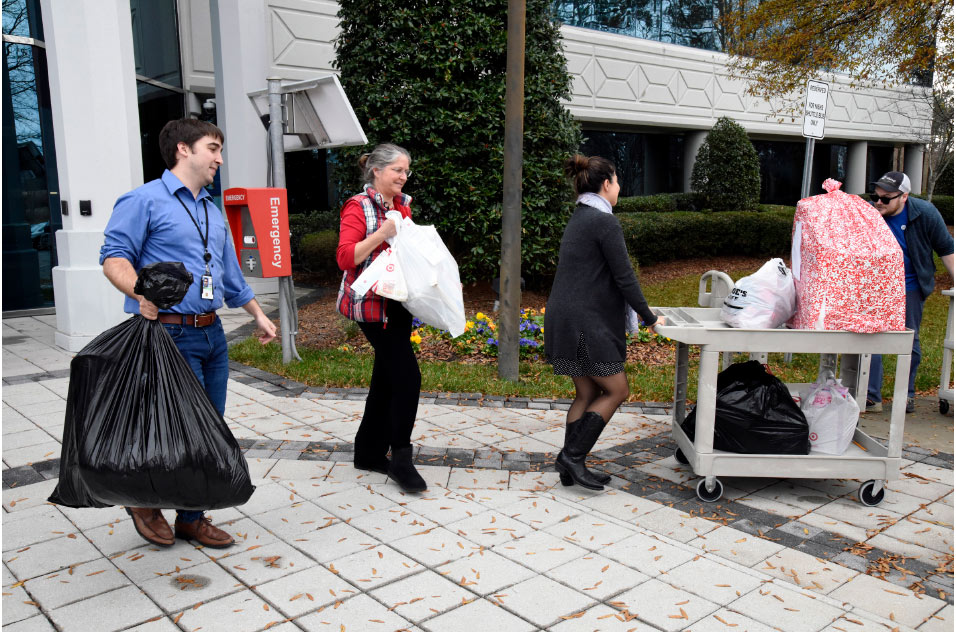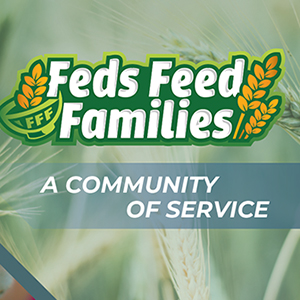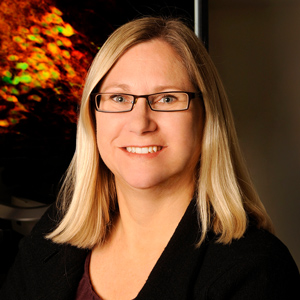More than 100 children received Christmas presents thanks to the generosity of the NIEHS community. The institute’s federal and contract employees donated bicycles, toys, clothing, and other gifts as part of the Salvation Army of Durham’s Angel Tree program. The charity drive, which was overseen by the Office of Science Education and Diversity, ended Dec. 10, when volunteers loaded all of the items on a delivery truck.
The initiative helps underprivileged families during the holiday season. Children’s wish lists are written on tags — each representing an angel in need. Local organizations hang them on Christmas trees, and an individual can select a child’s tag and buy the items on his or her list.
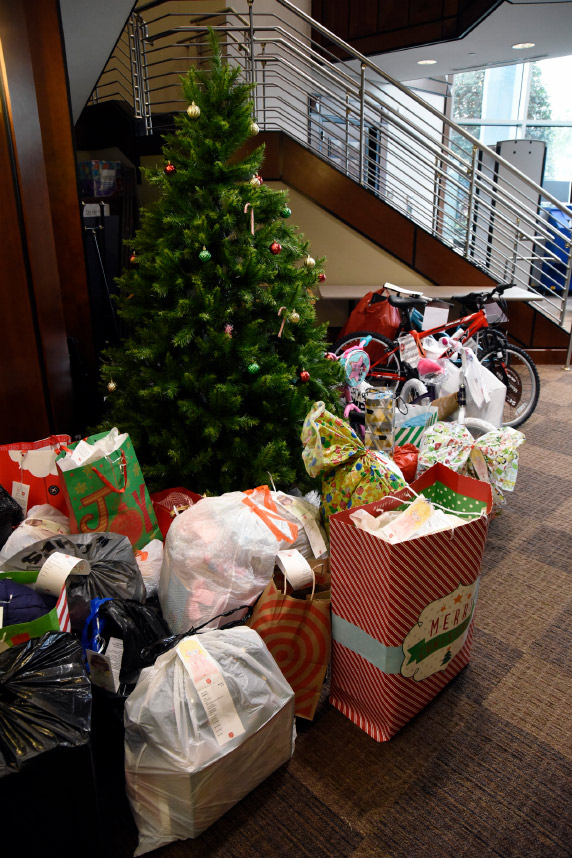 Gifts surrounded the tree in the Keystone building. (Photo courtesy of Steve McCaw)
Gifts surrounded the tree in the Keystone building. (Photo courtesy of Steve McCaw)At NIEHS, which has participated in the program since 2011, two trees were erected so that employees could easily participate. The angel tags — there were 103 in all — soon were pulled from the trees, and presents quickly piled up. Some people made donations even after all of the wish lists were gone.
The gift of giving
“It’s always good when you see your fellow coworkers as excited as you are about this initiative,” said Veronica Godfrey Robinson, a National Toxicology Program (NTP) biologist who helps to organize the institute’s Angel Tree efforts. “If we can help to put a smile on the children’s faces or warm their hearts, then we have done a good thing.”
Robinson was aided by co-organizers Myra Westmoreland, of the Administrative and Research Services Branch, and Kristen Ryan, Ph.D., an NTP toxicologist.
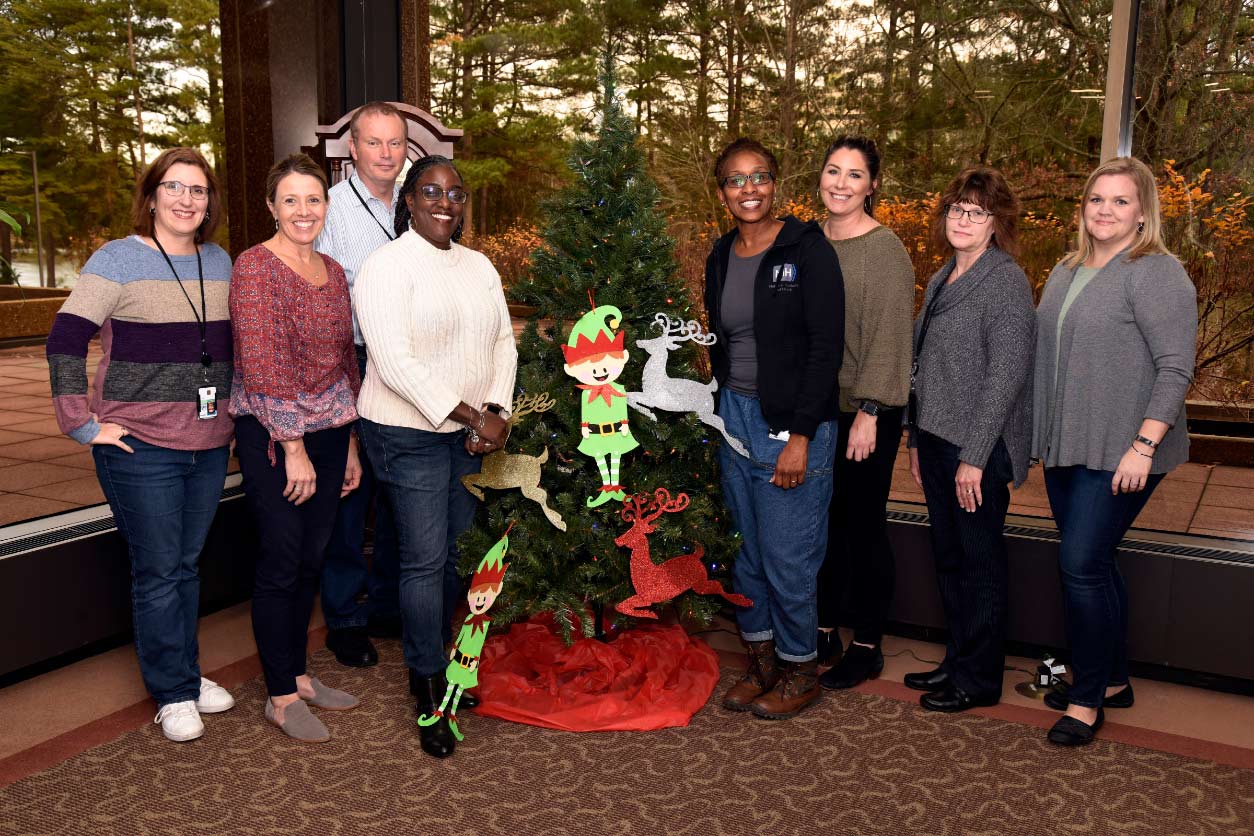 Volunteers at the Rall building gathered for a group picture. From left to right, Sandy Henriquez, Ph.D., Marsha Johnston, Dave Bullard, Robinson, Westmoreland, Kristen Fisher, Carolyn Emerson, and Jill Hughes. (Photo courtesy of Steve McCaw)
Volunteers at the Rall building gathered for a group picture. From left to right, Sandy Henriquez, Ph.D., Marsha Johnston, Dave Bullard, Robinson, Westmoreland, Kristen Fisher, Carolyn Emerson, and Jill Hughes. (Photo courtesy of Steve McCaw)“This is a chaotic time of year, and many people are focused on family and people directly in their circle,” said Westmoreland. “We can forget that there are people other than us. But as soon as angels get on the trees, the calls start coming in: ‘Can I do this? Can I buy that? When are you going to take the gifts?’ The buzz around this program is super exciting,” she added.
Loading the gift packages on the Salvation Army’s delivery truck required team effort, as they were heavy and took up significant space. Of course, that meant good news for the local children who would receive them.
“These are heartfelt wishes that our colleagues are giving to these families, and they don’t know them at all,” said Westmoreland. “To me, for them to do that, it’s beautiful.”
(Jesse Saffron, J.D., is a technical writer-editor in the NIEHS Office of Communications and Public Liaison.)





